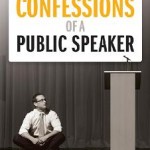Last updated on October 10th, 2024 at 06:07 pm
 Throughout my life and public speaking career, I’ve been captivated by the power of storytelling. It’s not just an art form; it’s a fundamental business tool that, when mastered, can elevate your speaking career and business far beyond what speech skills alone can achieve.
Throughout my life and public speaking career, I’ve been captivated by the power of storytelling. It’s not just an art form; it’s a fundamental business tool that, when mastered, can elevate your speaking career and business far beyond what speech skills alone can achieve.
Mastering the art of storytelling is more than a useful technique—it’s an essential component of success for public speakers.
Whether you’re giving a keynote speech, delivering a pitch, or simply engaging with your potential bookings, the ability to craft and deliver a compelling story can transform your message into something memorable and impactful.
The Power of Connection
At the heart of every great story is connection. As humans, we are wired to respond to stories. Research in psychology has shown that stories evoke empathy, trigger emotional responses, and foster a sense of trust. When a public speaker weaves a story into their presentation, it engages the audience on a deeper level than data or statistics ever could. Whether speaking to investors, colleagues, or potential clients, storytelling allows you to bridge the gap between yourself and your audience, making your message more relatable and persuasive.
Stories Make Data Memorable
In the business world, facts, figures, and data are crucial. But as any experienced public speaker knows, data alone is not enough to sway an audience. Storytelling is the tool that transforms dry information into something your audience will remember long after your presentation ends. When you frame your data within a narrative, it becomes easier to understand, more relatable, and infinitely more memorable. This is why the best public speakers don’t just relay information—they craft a narrative around it. They tell the story of why those numbers matter and how they affect real people.
Storytelling Drives Action
A well-told story doesn’t just inform—it drives action. Great public speakers use storytelling to inspire, motivate, and challenge their audience. In a business setting, this might mean encouraging your audience to adopt a new way of thinking, a new strategy, or simply viewing their work from a different perspective. The key is to use storytelling to make your message personal to your audience, creating an emotional investment in the outcome. When people see themselves in your story, they are far more likely to take action.
Authenticity in Storytelling
One of storytelling’s most powerful aspects is its ability to convey authenticity. In an era where transparency and trust are paramount, audiences crave real stories about real people. Public speakers who can share authentic stories—whether from their own experience or the experiences of others—have a significant advantage. Authentic stories build credibility and trust, which are essential for long-term success in any industry.
Storytelling Builds Brands
In the business world, branding is everything, and storytelling plays a pivotal role in building and shaping a brand. Public speakers who are also entrepreneurs or business leaders can use storytelling to communicate their brand’s values, mission, and vision in a way that resonates with their audience. Whether you are crafting the narrative of your company’s founding, sharing success stories of clients, or illustrating the impact your product has on people’s lives, storytelling helps humanize your brand and makes it more memorable.
Stories Engage Emotion and Logic
Effective public speaking often requires a balance of appealing to both emotion and logic. Storytelling achieves this effortlessly. A story that resonates emotionally can draw your audience in while integrating logic through facts, data, and insights helps ground your message. The emotional aspect keeps people engaged, while the logical side builds their understanding and justifies the conclusions you want them to reach.
5. Practical Tips for Incorporating Storytelling
1. Know Your Audience: Tailor your story to the needs, interests, and experiences of the audience you are addressing. A story that resonates with one group might not connect with another.
2. Keep It Simple: A good story doesn’t need to be complex. In fact, simplicity often makes it easier for your audience to follow along and connect emotionally.
3. Use Structure: Every great story has a beginning, middle, and end. Introduce the conflict or challenge, describe the journey, and conclude with a resolution or insight.
4. Be Authentic: Share stories reflecting your values and experiences. Audiences can easily detect when a story lacks authenticity.
5. Practice Delivery: The way you tell the story is just as important as the story itself. Use pacing, tone, and gestures to enhance the emotional impact of your message.
In the competitive world of public speaking, the ability to craft and deliver a compelling story can set you apart. It’s not just about being able to present information; it’s about making that information resonate. Whether you’re speaking to colleagues, clients, or investors, storytelling is your secret weapon for building trust, making your message memorable, and driving action. As I’ve witnessed throughout my career, the benefits of mastering this skill are limitless—professionally, personally, and financially.
Kelly Swanson is an award-winning storyteller, comedian, motivational speaker, Huffington Post Contributor, and cast member of The Fashion Hero television show airing on Amazon Prime. She is also the author of Who Hijacked My Fairy Tale, The Land of If Only, The Story Formula, and The Affirmation Journal for Positive Thinking. She was a featured entertainer for Holland America Cruise Lines, keynote speaker for the International Toastmasters Convention, and has keynoted major conferences and corporate events from coast to coast. She just launched her one-woman show Who Hijacked My Fairy Tale in theaters, and it is being booked all over the country. In July of 2022, she was inducted into the National Speakers Association Speaker Hall of Fame.
Note: Articles by Kelly may contain affiliate links and may be compensated if you make a purchase after clicking on an affiliate link.




